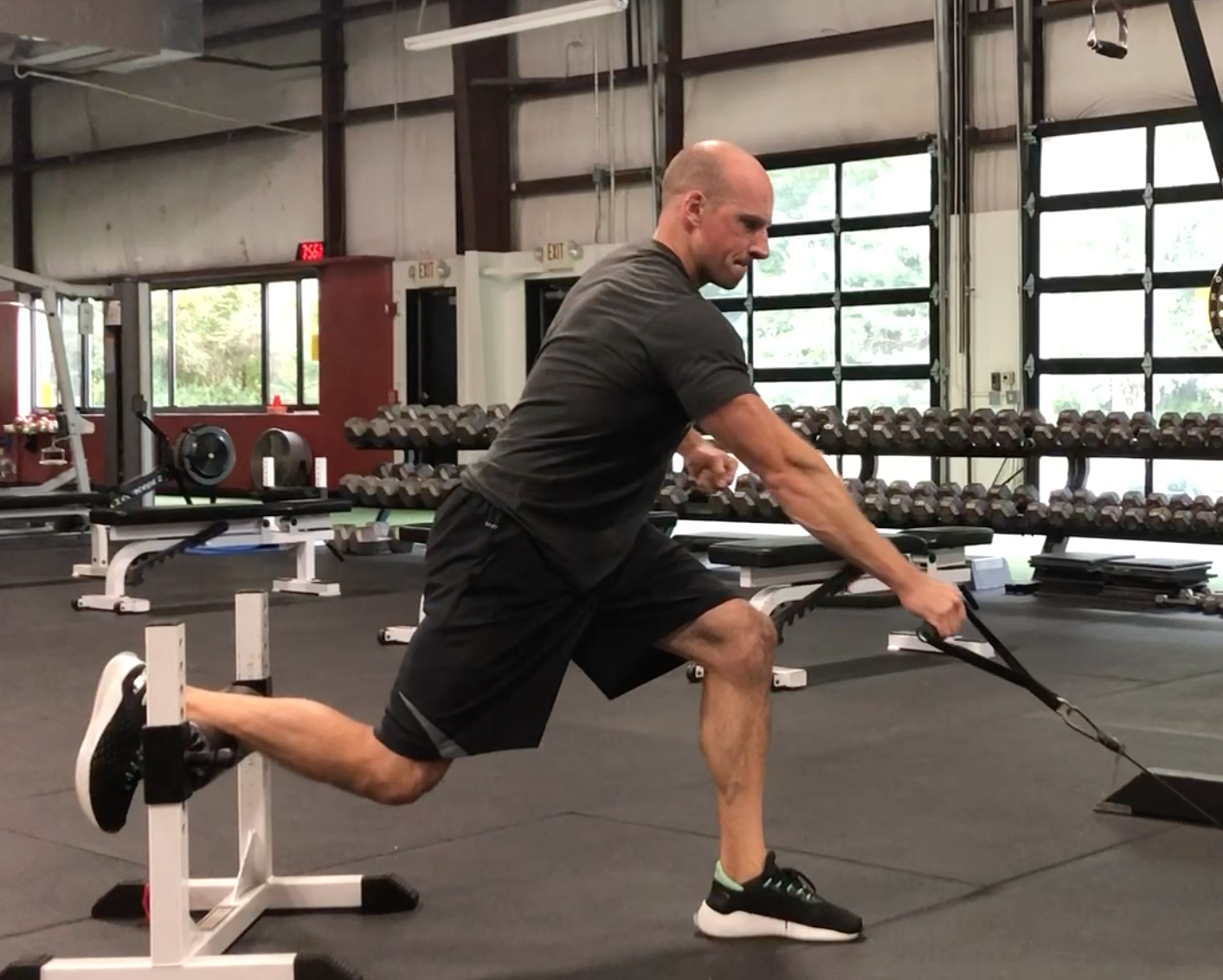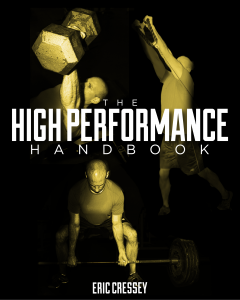
Programming Principles: Installment 4
With my recent sale on The High Performance Handbook, it seemed like a good time to update this series on program design strategies. Many fitness professionals and strength and conditioning enthusiasts have looked to this resource as a model upon which to base some of their program design efforts, so I thought I’d dig in a bit deeper on a few useful principles you’ll find in it that should be consistent across all programs.
1. The warm-up should always build context for the strength and power training exercises that follow.
A good warm-up shouldn’t just get your body temperature up; it should also be a chance to drive quality movement so that you’re patterned for the loading that follows.
Planning to sprint and want to improve the likelihood that you’ll get clean hip extension? Try a glute wall march iso hold.
Looking forward to a big overhead pressing day? Get in a set of the back-to-wall shoulder flexion drill.
[bctt tweet=”Specificity doesn’t just matter with respect to how your high-load and high-velocity movements carry over to performance; it also relates to how your warm-ups prepare you for those movements in the first place.”]
2. In any program, the most important work should occur early in the training session.
In my opinion, one of the absolute ways to teach a young coach how to efficiently and effectively program is to ask him/her to take a 4x/week strength training program and pare it back to a 3x/week and eventually a 2x/week program. In doing so, it forces the coach to really consider what the most important programming inclusions are.
95% of the time, you’ll find that it simply means cutting off the last exercise pairing from each day, trimming the volume on certain exercises, and then simply rearranging the exercises so that there aren’t competing supersets (which can often happen when switching from an upper/lower split to a full-body approach). If you go through this exercise and find that any of your A1/A2 and B1/B2 programming is “expendable,” then you probably need to reconsider your programming approaches.
3. Make use of combination exercises when you need to be efficient – or just more athletic.
Let’s face it: you don’t always have unlimited time to get in an optimal training effect. In this situations, it’s really helpful to have exercises you can plug in to combine some of your favorites. Here are just a few examples:
Landmine Squat to 1-arm Press – I love this as a first exercise on the middle day of a 3x/week strength training program. You can train a squat pattern, get a bit of lower body stimulus, and still drive some free scapula pressing under considerable load.
Rear-Foot Elevated 1-arm Low Cable Row – This is a great horizontal pulling exercise you can plug in when you also want to get a little single-leg emphasis, but don’t want to bury an athlete with fatigue or soreness. I might use it on a full-body day when we’ve already had a deadlift variation and lateral lunge variation, but I want some kind of single-leg work in the sagittal plane without making the session last much longer.
The possibilities are really endless on this front, but the point is that you always need to have options for delivering multiple training effects without driving excessive volume or really long sessions.
I’ll be back soon with another Programming Principles installment, but in the meantime, be sure to check out my flagship resource, The High Performance Handbook, as an example of how I attack my programming.



